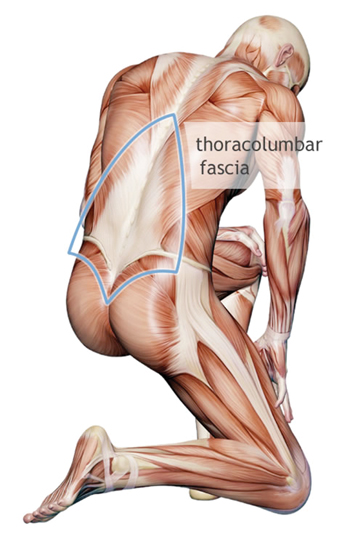Fascia, Fascia, Fascia
Sunday Dec. 30th, 2012
 The human body is a complex organism comprised of billions of cells, each with their own individual needs and functions. Ultimately these individual cells must work together to provide us with the ability to live, move and perform thousands of activities throughout each day. Your able to read this article because various cells throughout your body are working together, holding the magazine, letting your eyes scan the words on the page, your brain interpreting those funny letters and making meaning out of them. If your reading this out loud your using even more body functions to form words and project your voice.
The human body is a complex organism comprised of billions of cells, each with their own individual needs and functions. Ultimately these individual cells must work together to provide us with the ability to live, move and perform thousands of activities throughout each day. Your able to read this article because various cells throughout your body are working together, holding the magazine, letting your eyes scan the words on the page, your brain interpreting those funny letters and making meaning out of them. If your reading this out loud your using even more body functions to form words and project your voice.
Within our body there is a special type of tissue called fascia. Fascia is a connective tissue that works like glue to keep things together. But unlike glue the fascia is made up of living cells that create a matrix that is extremely strong, yet flexible. Fascia provides a fabric capable of helping the body to communicate and transfer forces and power throughout the body during many activities such as throwing, jumping, or shoveling snow. Thomas Myer, a Rolfer and anatomist discovered fascial planes within the body, connecting it from top to bottom in one continuous fascial network. These fascial planes, which he refers to as anatomy trains, along with the muscles and bones provide a framework to balance the structure of the body and help with movements. There are planes in the front and back of the body, superficial and deep. There are spiral planes that wrap around the body to help with movements that involve twisting and spinning, and also lateral lines. These lines are continuous throughout the torso, arms and legs.
Fascia, although essential for movement, can develop problems that inhibit movement, and create a myriad of functional problems. These functional problems can lead to pain and decreased or inhibited mobility/movement of the body. The fascia being like glue can also become sticky and bind to other fibers of connective tissue. These abnormal connections prevent body tissues from moving or sliding past other tissues as they are normally supposed to. Think about trying to move around in a jacket that is too tight, or a wrinkled sleeve that is caught and not allowing you to raise your arm. It can be very frustrating and all you want to do is take the lousy jacket off, and when you do you feel so much freer and happier.
Myofascial release is a procedure that evaluates the area of fascial restriction and works to breaks up the adhesion allowing the tissues to move freely. Many chiropractors and massage therapists utilize myofascial release techniques in their practices to assist in relieving structural imbalances. These techniques include Active Release Technique, Graston, Rolfing, Gua Sha, Vibricussor therapy, and many others. Some therapists will swear by a certain technique but they are all designed to do the same thing – find the restriction, break it up and allow the tissues to move more freely. Myofascial therapy sounds like it would be a painful procedure, but surprisingly when done properly the discomfort is often minimal, and relatively short lived. Many patients refer to it as a “good pain”, uncomfortable but getting to the area where the pain has been arising from, and bringing relief.
Myofascial release techniques have been recognized as “miracle therapies” because it often does not take more then 1-3 treatments to see incredible results with significant reduction in pain and increased function and movement. Remember, fascia is only one part of the whole body, so not every problem is caused by tight fascia it could also be due to muscle dysfunctions and skeletal troubles as well.
Myofascial release has been shown to significantly reduce many symptoms and conditions including but not limited to: headaches, migraines, whiplash, back pain, rotator cuff injuries, frozen shoulder, carpal tunnel, shin splints, runners knee, IT band syndrome, and many others. By relieving the area of restriction or nerve impingement, helping to remove scar tissue, and improve circulation and blood flow these symptoms many times clear up and your nagging old problem disappears.
As with any technique or therapy, myofascial release has its limitation and comes with warnings and contraindications. As a whole, myofascial release is safe, non-invasive, and minimally painful. Some skin pulling or “Indian burn” is usually the worst of the discomfort. A well-practiced practitioner knows how to makes those hard to get or more sensitive spots less uncomfortable. Just like any profession there are good therapists and bad therapists. Finding a good therapist who can evaluate and remove your fascial restrictions can provide significant relief and increased function so you can get out and enjoy all the fun, wonderful activities we have to enjoy here in Bozeman.
Dr. Phil Cameron is a Chiropractic Physician and Professional Applied Kinesiologist. He owns the Bozeman Wellness Center, where he treats each patient individually helping every person to live Heathy, live Naturally, and live Optimally.
| Tweet |